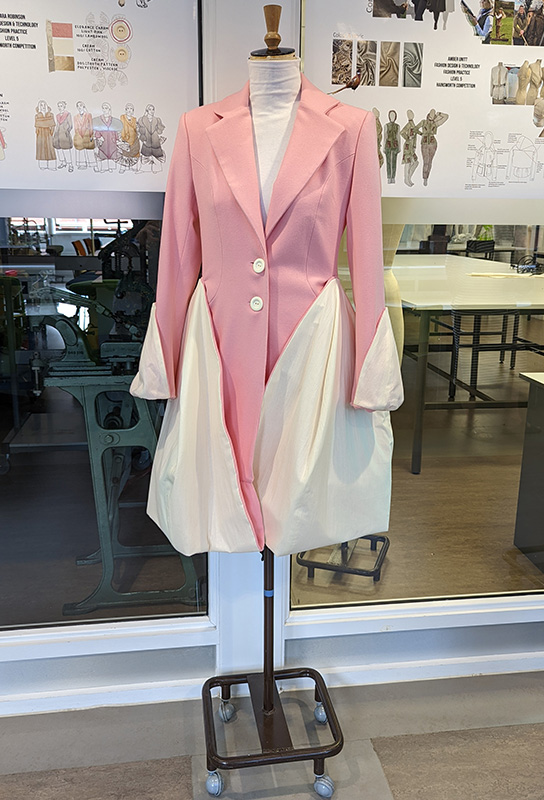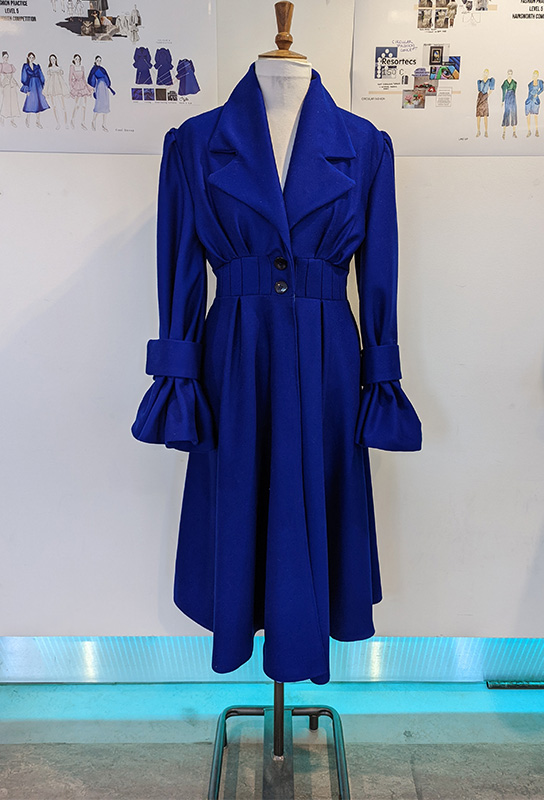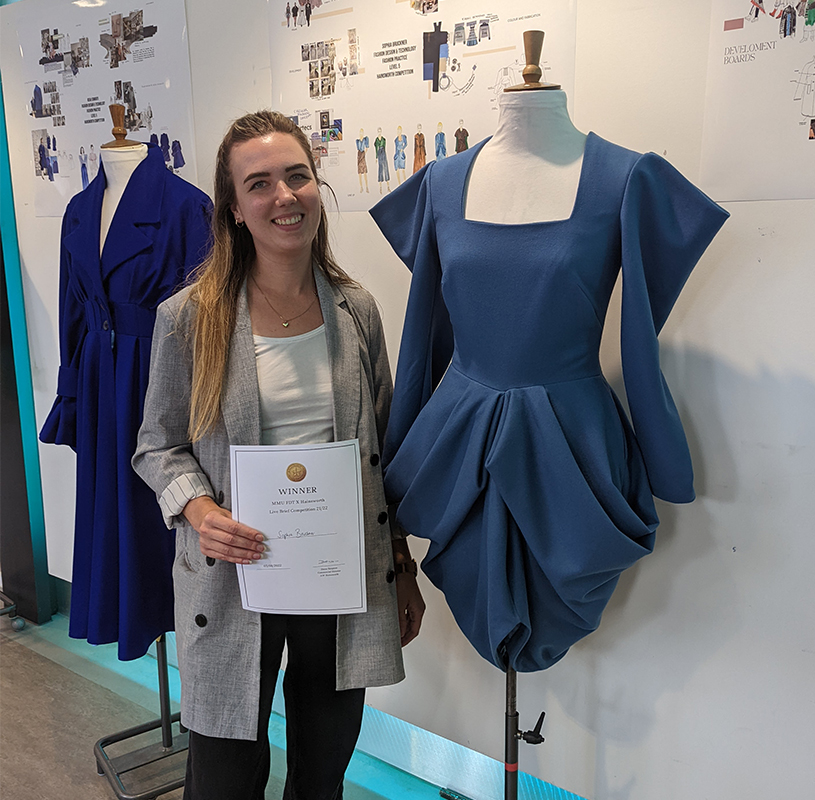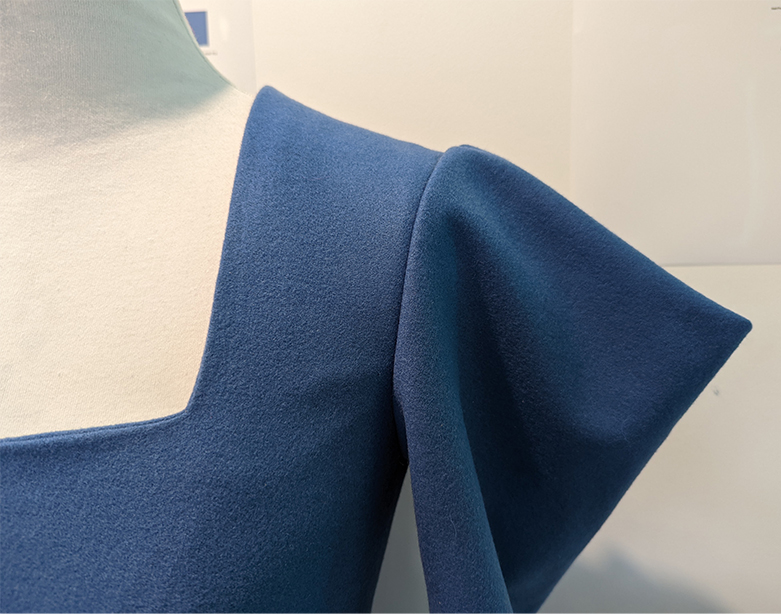“The future of fashion is circular. It has to be.”
Stella McCartney
Thanks to a market bloated by trend-chasing high-turnover clothing brands, the fashion industry is fast becoming one of the most polluting in the world. Consumer demand for fast fashion and its associated CO2 emissions, use of cheap synthetic materials and high amounts of water wastage is posing a significant threat to our environment.
Fortunately, action is being taken in some areas to transform the industry and develop sustainable design and manufacturing practices to reduce its impact. One of these movements is referred to as circular fashion – a term used to describe a fashion industry in which waste and pollution are designed out of the process, and in which every part of the garment life span is cyclical.
When designing a circular garment, longevity and timelessness must be central to the process, and every stage of the garment life cycle considered. Circular garments are also designed to continue having a purpose after the owner is finished with it, whether that be through re-use, redesign or recycling.
For our 21/22 Live Brief competition, we challenged a new generation of designers to create a circular fashion garment to win a £500 prize. Fashion Design and Technology Students at Manchester Metropolitan University (MMU) were asked to consider how their garments would be made, used and repurposed at the end of life, while using sustainable materials and minimising waste.
In August 2022 the Fashion Institute held a showcase of the resulting garments and we made the trip to Manchester to award the winner. The finished garments on display were a testament to the skills, imagination and talent found at MMU. Read on to find out more about the entrants…
Esosa Andrea Iguodala’s military-inspired coat in Black Hainsworth Duffle was designed to be made into a handbag at the end of its life.
Clara Robinson took inspiration from mushrooms, creating a tailored coat from Elegance 100% Lambswool in Charm (a soft pink). As wool is a biodegradable fibre, the coat is to be used for compost when it is no longer wearable.

In a vibrant Neon Orange Melton, Megan Coats designed a unique trench coat with detachable elements that can be worn 5 ways, with a lining printed with pattern pieces to allow it to be made into a bag once the owner has finished with it.
Reminiscent of theatre costuming, Reka Somogyi designed a fitted coat in Royal Blue Doeskin that can be repurposed as upholstery.

Amber Unitt was influenced by the Queen’s shooting jacket to create a modern design using Barathea in Lovat Green and WW2 Khaki, with instructions to return it to the manufacturer for recycling.
Though all these garments were designed and finished to a high standard, one student’s innovative approach to the challenge stood out. Sophia Bruckner’s prize-winning design was not only a beautifully constructed and wearable garment, but was conceived with fine attention to detail and presented in a way that truly communicated her passion and commitment to the concept of sustainability.
Sophia was influenced by Hainsworth’s long heritage and association with iconic British tradition to take inspiration from the customs of her homeland, Bavaria. Sophia took the traditional dirndl silhouette worn at events such as Oktoberfest and the Viehscheid, characterised by a fitted bodice and apron, to design a dress with a tailored waist, full skirt and structured shoulders. She chose Hainsworth’s Vivid Hues Melton in Cornflower Blue, ideal for dressmaking due to its light weight and fine drape.

In addition to Hainsworth wool, the dress is lined using recycled cotton and the seams stitched using a heat-dissolving thread, meaning that at the end of life the seams can be easily taken apart and the fabric pieces left undamaged. The fabric can then be repurposed or recycled. During the manufacturing process, trims were left to a minimum and fabric scraps were donated to artists Asako Iwazumi and Guerra de la Paz, who create art from leftover textiles. Finally, the care label on the dress gave the wearer details to contact the manufacturer to return and recycle the garment.
Having carefully considered every single step of the design, development and post-wear process, Sophia’s intelligent and thoughtful take on the brief is a valuable contribution to the circular fashion movement.
Sophia said, “The Hainsworth brief immediately spoke to me, not only from its sustainability aspect but because it reminded me of my home and my traditions. It felt amazing to be able to incorporate this into my designs, while working with natural fabrics.
“Working with Hainsworth cloth was great. Especially as a student, you don’t often get the opportunity to work with high quality fabric and I could really feel and see the difference compared to fabrics I’ve worked with before. I love how my garment turned out using Hainsworth wool and I’m sure it will bring me joy for a long time!

“I feel very honoured to be chosen as the winner of this year’s brief. Trying to make fashion more sustainable and circular is a big reason why I chose to study fashion. It feels great to win a competition revolving around topics I’m passionate about and I will carry these ideas and my research into my future designs.”
Charlotte Law, Marketing Manager at AW Hainsworth, said, “We really value the chance to work with students and give them first hand experience of working to a client brief. The quality of entrants this year was very high, which speaks to the talent coming through at Manchester Metropolitan University.
“We selected Sophia as our winner because, in addition to creating a beautiful garment, she presented the most considered approach to circular fashion, minimising waste during the manufacturing process and throughout the garment lifecycle. Well done Sophia!”
